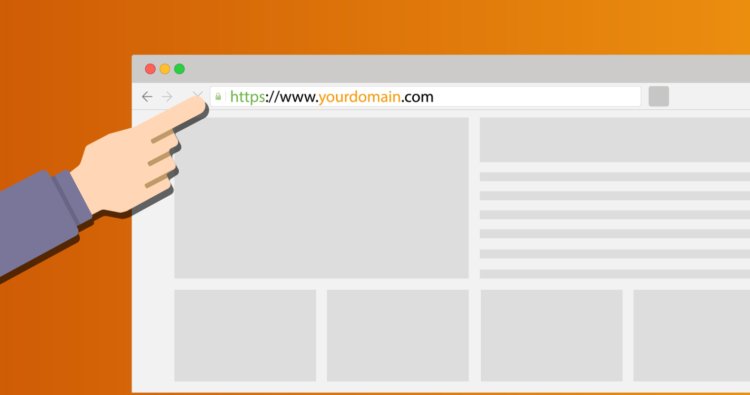From SEO URL to SEO url Friendly
From SEO URL to SEO url Friendly how - in order to avoid duplicate content problems in search engines. So far so good, but, before you start optimizing URLs, do you really know what they are and how they work

The first thing to know about SEO-level URLs is that all content on the web must have a single URL (Uniform Resource Locator), in order to avoid duplicate content problems in search engines. So far so good, but, before you start optimizing URLs, do you really know what they are and how they work?
What is a URL?
Making a summary version of Wikipedia: a URL is the text version to replace IP addresses, so that it is readable, both for people and for computers, in order to communicate with servers.
In 1995, Tim Berners-Lee, the father of the World Wide Web, implemented the standard that would later be called URL; today it is estimated that there are over 100 billion web pages that use the URL standard.
What is a URL made of?
A URL is made up of 4 parts, these govern the rest of the URLs of a website:
- Protocol: There are two basic types of protocols:
- http: is the basic protocol with which most of the pages on WWW servers are governed;
- https: is the security protocol. This type of protocol is used to protect user data, such as credit card numbers or personal data. It is currently quite an important factor in SEO .
- Subdomain: A subdomain is a third level domain that depends on the main domain. You can create as many subdomains as you want, without any kind of restriction, these are examples used in many websites:
- www.example.com (www is the subdomain)
- shop.example.com (shop is the subdomain)
- Domain: it is the main level of a website, if the domain is free, it can be registered.
- TLD: is the extension that accompanies the domain.
- Subfolders: As the name indicates, these are folders that are located within a domain or subdomain.
- Page: It could be said that it is the last level of a URL, where the final content is located.
When it comes to optimizing a URL, you need to take into account the priority of the different elements of the URL. These below are the four elements that carry the most weight when it comes to URL SEO:
- Domain
- Subdomain
- Subfolder
- Page
How to create SEO Friendly URLs
Now that you know what the parts that make up a URL are and what each one represents within the whole, we will see 9 guidelines to follow to optimize the SEO of a URL.
-
Add the keyword
It is important to add the keyword in the URL whenever possible for various reasons and made sure that it makes sense. Don't confuse this with adding the keyword to your website's domain, which has long since ceased to be a ranking factor.
The first reason is that many times the URLs are copied and pasted in social networks or blogs and no specific anchor text is added , leaving the URL as anchor text, therefore, it is important to add a well optimized URL.
The second reason is that it helps users find your URL in social networks, in an email or through any other means; serves to make it clear what will be found on the page.
The third reason is that search results are highlighted in keywords and URLs are a very important part of what Google shows. For example, if we search for "what is SEO" we see this:
-
Use dashes
Whenever you want to separate words in a URL, you need to use hyphens (-) and try to avoid types of separators like underscore and + symbol:
- NO: www.example.com/product_sheet.html
- NO: www.example.com/product+sheet.html
- YES: www.example.com/product-sheet/
-
Avoid parameters whenever possible
Parameters in a URL should be avoided as much as possible , since it is very difficult, in an e-commerce, to distinguish between versions of the same product and those that are used to order a series of products without using parameters.
There are many types of parameters: product filters (color, size, score), sorting (lowest price, by relevance, highest price, in the grid…), pages (in the case of a blog) and user sessions. The problem, in addition to the loss of positioning as the length of the same increases, is that many of these parameters do not modify the content of the page, this means that there are many URLs for the same content.
In this example we can see three parameters: color, low price and high price.
www.dominio.com/vestidos?color=azul&precio-desde=30&precio-hasta=50
-
The shorter the URL, the better
There is generally no limit to the length of a URL, but it is recommended that it be short for two reasons:
- It is much easier for the user to read and understand a short URL than a long one.
- A word's ability to rank in a URL is lower the further to the right it is in the URL itself and the more words the URL has.
-
Do not use "stopword"
Although there are stop words (linking words like “in, for, of”) in the title or header of your website, you don't need to put them in the URL. If you can remove these types of words without making the URL nonsense, do so.
-
Avoid using strange characters
Any characters other than the English alphabet are not welcome in a URL, such as accents or question marks. It is best to use only letters and numbers that are found in the English alphabet.
Likewise, you should avoid entering spaces, as the browser rewrites them as "% 20".
-
The fewer levels the better
A search engine has limited time when crawling a website, so if the URLs have many levels, it will have to navigate a lot until it reaches the deeper content.
Let's say we have this URL:
- example.com/cappelli/orrendi/rosa/cappello-leopardo-rosa/taglia-l/
And we replace it with this:
- example.com/cappelli/cappello-orrendo-leopardo-rosa-l/
It is not without the fact that having many folders is a huge problem for SEO, but it will improve the indexing of the web by Google, as well as make it easier for the user to read the URLs, making them logical.
-
Use subfolders instead of subdomains
There is a lot of discussion about what is best in terms of SEO: depending on what you are looking for, one thing or another will be better . Let's take the example of a blog within a website:
If you want to get links, mentions and relevance to the blog and also have it directly affect the SEO of your site, the best option is to create it in a subfolder, as all the benefits are "carried over" from the blog to the web. This also makes it much easier to analyze user flow in Google Analytics.
If, on the other hand, you want what happens on your blog to have no influence on the web, either for fear of a penalty or because the web is oriented to more than one country, choose a subdomain.
-
Beware of redirects
If on your internet site URL A redirects to URL B, it's quality, but if URL B additionally redirects to URL C you can start having problem with Google. In this example it'd be much better if URL A redirected directly to URL C, to keep away from one of these long redirect chain.
The problem is not that Google decides now not to observe these redirects till you get to the final URL, but that every one the rating factors of the primary URL can move down with every redirect, so it's far better to preserve them as short as viable.
Hope these nine pointers assist you get a higher concept of how to configure your internet site URLs.

















